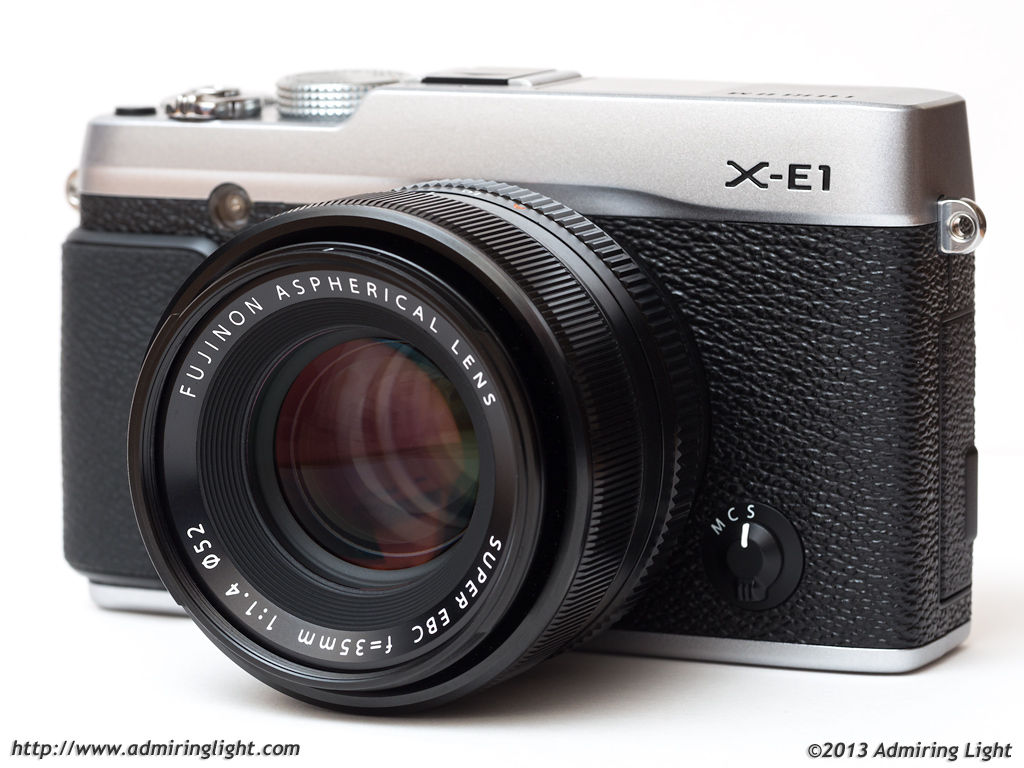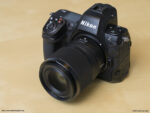Table of Contents
Image Quality: Resolution, Dynamic Range and Color
The X-E1 is an interesting character with regards to image quality, primarily due to some of the controversy about the X-Trans sensor that Fuji uses. The X-Trans sensor uses a non-Bayer filter array to capture detail and color, and this has the supposed benefit of increased detail without moire due to the ability to eliminate the low pass filter that is found on most other digital cameras. In my shooting, I haven’t found the X-E1 to have any greater detail than any other 16 megapixel camera. With a sharp lens, it is certainly capable of resolving impressive amounts of detail, but no more than any other sensor I’ve used with similar resolution. The downside to the X-Trans sensor is that it requires completely different demosaicing algorithms when processing RAW files, and there are some instances where this process results in odd painterly artifacts. While recent versions of Adobe Lightroom and Camera Raw as well as Phase One’s Capture One 7 have addressed this issue and minimized the effect, it can still crop up if you really look for it. I don’t think with current situations, though, that it impacts most shots, and in the few shots where it is slightly visible, it wouldn’t show up in a print or screen reduction.

The dynamic range of the Fujifilm X-E1 is absolutely stunning. The RAW files of the X-E1 are calibrated a little to the right, so you do need to watch your highlights a little when you’re picking your exposure, but the shadow well is deep…there is a tremendous amount of detail in the shadows of RAW files, and if you use the gentle highlight and shadow settings in JPEG, you get a lot of this dynamic range in the JPEG files as well. The shot to the right is taken near noon, shooting towards the sun. While I wanted to maintain a balance between shadow and highlight in the final image, I can bring up the shadows enough to see clear detail in the deepest shadows of the bike rack roof (even seeing threads on the bolts).
Color on the X-E1 is quite good, though very muted in the RAW files by default. Usually, I need to push saturation up quite a bit when shooting RAW, but the files hold up beautifully, and the files have a wealth of color data to use. In JPEG modes, there are a number of film simulations that produce really beautiful colors right out of camera.
This all adds up to a real wonderful depth to the images, with great tonal response and very nice rolloff of the highlights. I love the overall look of the images, and despite the quirks of the body, it’s the final file that keeps me shooting with this camera.

Image Quality: Noise
Overall, the Fujifilm X-E1 provides very good noise control for an APS-C camera. Images are quite clean straight through ISO 800, and even 1600 and 3200 only have a little noise that’s pretty easy to clean up. I find that ISO 6400 is eminently usable, though a little rougher. ISO 12,800-25,600 are only accessible via JPEG shooting, but even these yield usable files for smaller prints and web use.
At base ISO, the camera produces extremely clean images. Skies are clear blue without noise and even shadows are nice and clean.
One thing of note is that the ISO for the Fuji X-E1 is slightly under-rated. The meter tends to expose a little brighter than most other cameras, so relying on the metering will yield slower shutter speeds in addition to the lower rated ISO, but I found the X-E1 to be about a 1/3 stop darker at the same ISO, shutter speed and aperture than my other cameras. Still, even accounting for the 1/3 stop lower ISO rating, the X-E1 is about a full stop better in the noise department than my Olympus OM-D E-M5.
JPEG Quality
I normally don’t cover JPEG quality all that much, but Fuji deserves special mention here. The out of camera JPEGs are utterly fantastic from the X-E1. If it weren’t for my desire for absolute control over my images, I could shoot JPEG all day long and not give it a second thought. Images have very low compression, look clean and detailed and the film simulation modes give great options from a softer, more muted Astia simulation, to the bold and vibrant Velvia simulation, you can get a look and adjust the parameters to work how you want.
I actually use JPEGs out of camera a fair bit, though usually not shooting in JPEG mode, but rather as in-camera conversions using the in-camera RAW conversion capabilities, which I’ll discuss next.
Video
As I noted at the beginning of the review, I’m not a videographer, so I’m not really qualified to discuss the intricacies of the video quality. I have used the video features a bit, and the X-E1 can shoot 1080p video, though control is limited to pre-shooting settings. Once you start recording, you can’t change aperture or exposure compensation. Video quality is pretty good, though not on the level of the best cams in this area. The X-E1 is geared towards stills use, and the video mode is nice to have when you want to shoot relatively high quality video when your’e out, but if you plan on shooting high quality video as a main feature, you’ll probably want to look elsewhere.






Leave a Reply